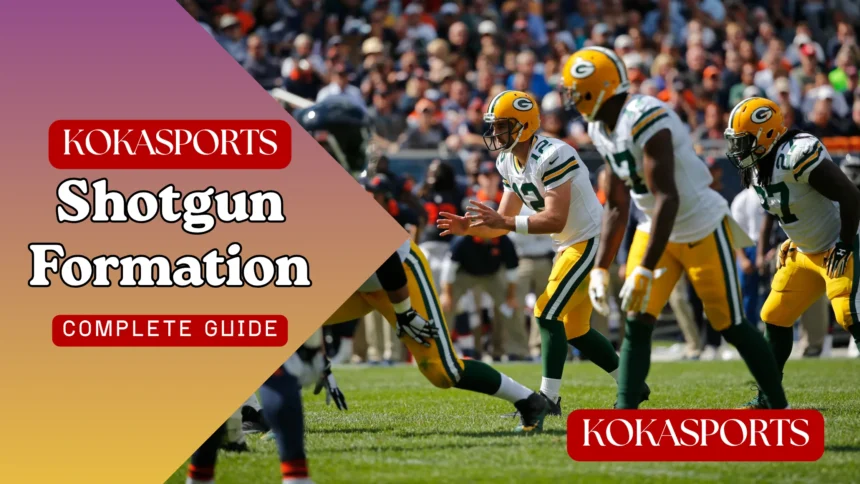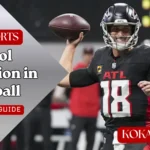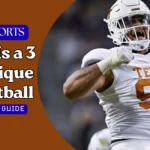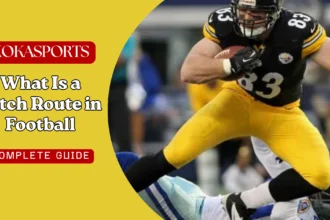The shotgun formation has revolutionized how American football is played at every level. From high school fields to professional stadiums, this offensive setup has become a cornerstone of modern play-calling. Whether you’re a dedicated fan, an aspiring player, or a coach looking to expand your playbook, knowing how this formation works is essential for appreciating the strategic depth of the game.
The shotgun formation in football changed offensive football forever. It gave quarterbacks more time to read defenses, improved passing efficiency, and opened up new possibilities for creative play designs. Today, almost every team’s offense incorporates some version of this setup, making it one of the most recognizable alignments on the field.
What Is the Shotgun Formation in Football?
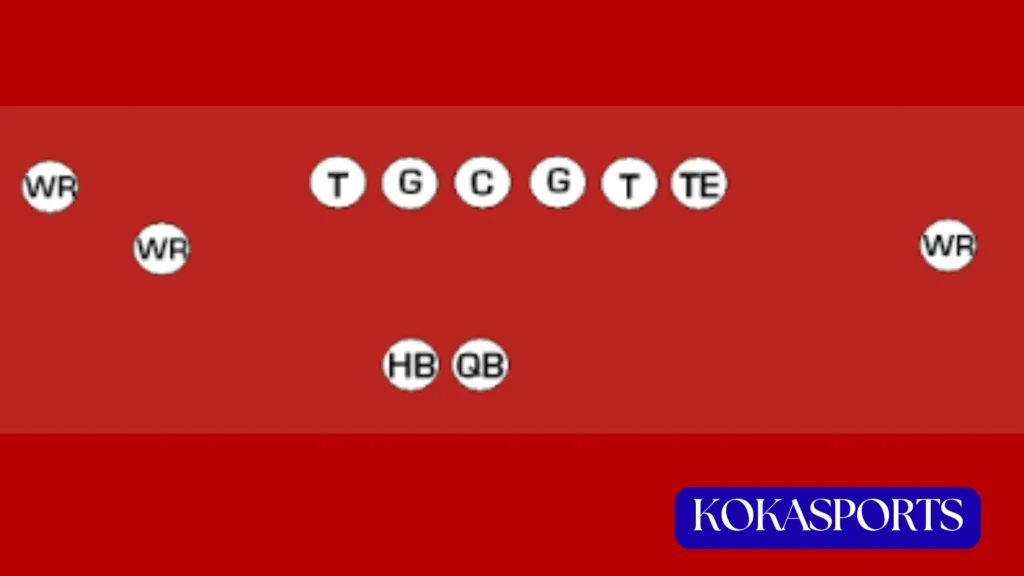
Definition and Basic Setup
What is shotgun formation in football? The shotgun formation is a formation where the quarterback stands several yards away from the center instead of directly behind them. Typically, the quarterback positions himself five to seven yards back, though some variations place him at different depths. This distance gives the quarterback a better view of the defensive alignment and extra time to make decisions before the pass rush reaches him.
The snap from center travels through the air to reach the quarterback, unlike traditional formations where the ball is handed directly. The offensive line maintains standard spacing along the line of scrimmage, while receiver positions and backfield alignments can vary based on the specific play design.
Key Characteristics of the Football Shotgun Formation
The football shotgun formation offers several distinctive features. First, it provides improved passing vision since the quarterback stands deeper in the backfield. This elevated perspective allows for quicker reads of defensive coverages and better anticipation of open receivers.
Second, the formation allows for faster release times. Since the quarterback already has the ball in his hands and doesn’t need to drop back after receiving the snap from center, he can deliver passes more quickly. This speed advantage is particularly valuable against aggressive defensive fronts.
Third, the shotgun formation creates flexibility. Teams can run both passing plays and running plays effectively from this setup, keeping defenses guessing about offensive intentions.
Common Misconceptions About the Shotgun Formation
Many fans believe the shotgun formation is mainly for passing plays, but this isn’t entirely accurate. While it excels in passing situations, modern offenses have developed numerous effective running concepts from shotgun alignments. The formation’s versatility allows creative coaches to design balanced attack schemes.
Another myth suggests that running game effectiveness suffers from shotgun alignments. However, many college and professional teams prove this wrong by generating substantial rushing yards while operating primarily from shotgun sets.
Read More:Pistol Formation in Football: Complete Guide Changing Offensive Strategy
Who Invented the Shotgun Formation?
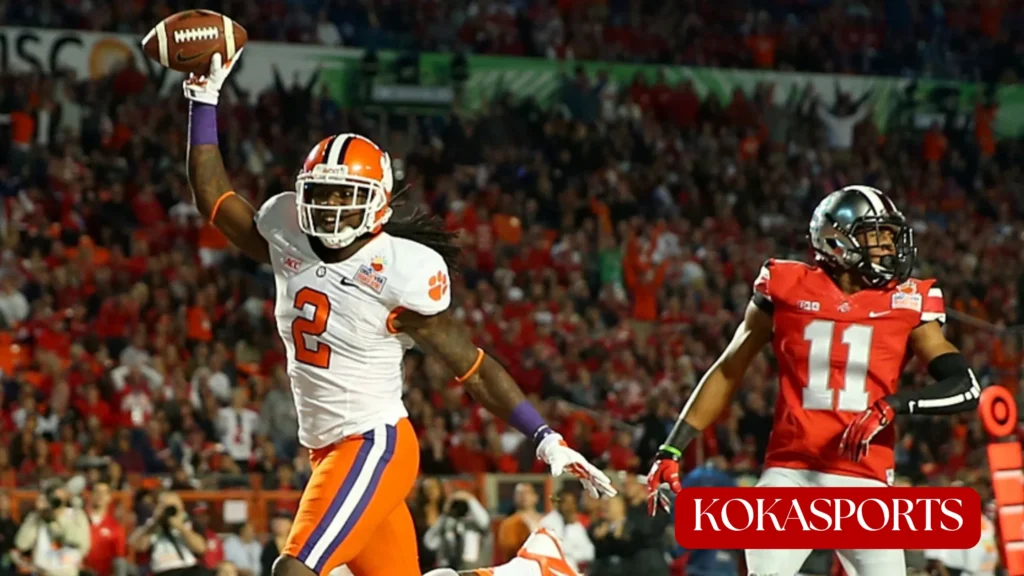
Early History and Origins
The shotgun formation didn’t appear overnight. Its roots trace back to earlier concepts like the short punt formation and long punt formation, which positioned the quarterback farther from the center. The punt formation typically placed the quarterback seven yards back, similar to modern shotgun depth. These related formations laid groundwork for what would eventually become the shotgun we recognize today.
The short punt and spread formations from early football eras experimented with quarterback depth and spacing. However, these weren’t used as primary offensive schemes but rather as special situation alignments.
Red Hickey and the San Francisco 49ers
Who invented the shotgun formation? The credit goes to Coach Red Hickey of the San Francisco 49ers. In 1960, Head Coach Red Hickey devised this innovative approach to give his quarterbacks more time and better vision. Hickey revolutionized offensive strategy by making the shotgun a regular part of his game plan rather than just a novelty.
Hickey’s original design placed the quarterback approximately seven yards behind the center. The formation was named after the way players spread out from the center, resembling pellets from a shotgun blast. John Brodie and Y.A. Tittle were among the first quarterbacks who employed the formation regularly under Hickey’s guidance.
The formation was devised specifically to counter the increasingly sophisticated defensive schemes emerging in the National Football League. By positioning the quarterback farther back, Hickey believed he could neutralize aggressive pass rushers and give his signal-callers better vantage points.
Evolution of the NFL Shotgun Formation
After its introduction, the nfl shotgun formation faced initial resistance. Many traditionalists viewed it as gimmicky. However, the Dallas Cowboys became major advocates. Tom Landry’s Cowboys used the shotgun frequently with Roger Staubach during the 1970s. The Cowboy shotgun differed slightly from Hickey’s original version, incorporating more motion and pre-snap adjustments.
Used the shotgun with great success, Staubach became one of the formation’s most effective practitioners. He’s enshrined in the Pro Football Hall of Fame partly due to his mastery of this alignment.
By the 1990s and 2000s, the shotgun was effectively becoming the standard rather than the exception. Teams discovered its advantages and disadvantages and learned to maximize its strengths while minimizing weaknesses.
Why Is It Called the Shotgun Formation?
The Meaning Behind the Name
Why is it called shotgun formation? The name comes from the visual similarity to a shotgun blast pattern. When the ball is snapped yards behind the center, the offensive players spread across the field like pellets dispersing from a shotgun barrel. The formation also creates spacing that resembles this dispersal pattern.
Some sources claimed that the shotgun name originated from the quarterback’s position behind the line of scrimmage, which resembles a shotgun rider’s position on a stagecoach—sitting back with a wide view of the surroundings.
How the Name Became Popular in Football Culture
The terminology spread quickly through coaching circles and media coverage. As more nfl teams used the formation, broadcasters and analysts adopted the shotgun terminology. The name stuck because it perfectly captured the formation’s visual characteristics and became part of standard football vocabulary across all levels of play.
Player Positioning in the Shotgun Formation
The typical shotgun formation—many variables exist, but core elements remain consistent. The quarterback stands 4 yards behind the center to 7 yards behind the center, depending on the specific play design and team preferences. Most commonly, quarterbacks position themselves five to seven yards behind the center.
The running back typically aligns next to or slightly behind the quarterback. In a shotgun formation with 2 running backs, both backs might flank the quarterback or stack behind him. This split back shotgun formation provides excellent pass protection options and creates deception for run-blocking schemes.
Receiver positions vary widely based on formation calls. Teams might use empty backfields with five receivers, or keep tight ends and backs in for additional blocking. The flexibility in personnel groupings makes the shotgun incredibly adaptable.
Shotgun Formation Plays and Strategies
Common Shotgun Formation Plays
The shotgun offense features diverse play designs:
- Quick slants: Fast-developing routes that get the ball out quickly
- Draw plays: Delayed handoffs that exploit aggressive pass rushers
- Screen passes: Short throws to backs or receivers with blockers ahead
- Read options: Plays where the quarterback reads defensive keys to decide whether to hand off or keep the ball
- RPOs (Run-Pass Options): Hybrid concepts giving quarterbacks post-snap decisions
Plays that use this formation often emphasize quick decision-making and timing. The quarterback’s elevated position behind the center at the line allows him to process information faster than traditional under-center alignments.
Benefits of Shotgun Formation Plays
Receiving the snap from center while already in a throwing position accelerates the entire passing sequence. A fast halfback can get good yardage on draw plays because defenses commit to pass rush, creating running lanes. The halfback can get good yardage by exploiting these aggressive defensive approaches.
The formation gives quarterbacks immediate visibility of the entire field. This advantage proves crucial for reading zone coverages and identifying blitzes before they arrive.
Shotgun Formation Variations and Related Formations
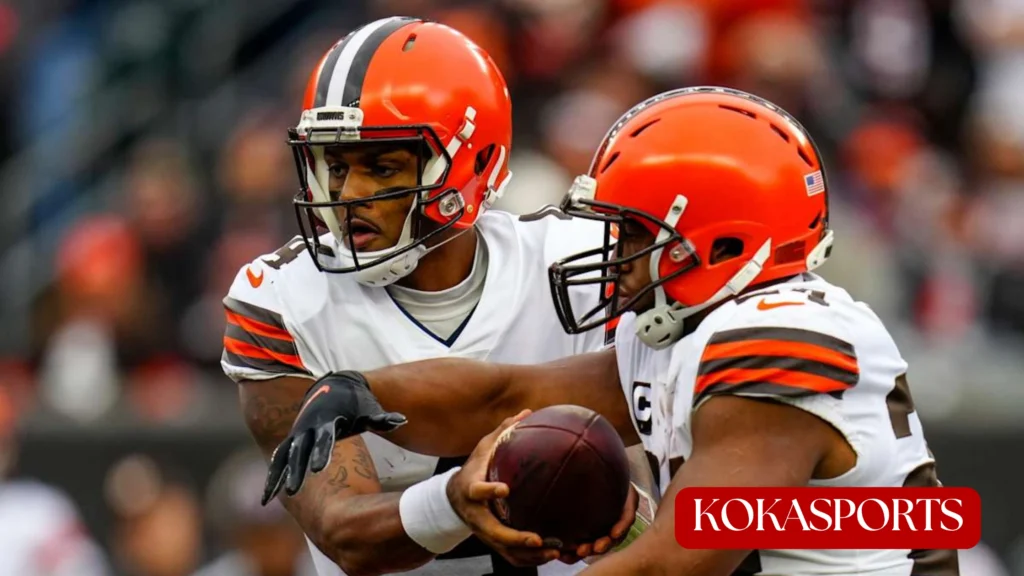
Split Back Shotgun Formation
The split back shotgun formation places two running backs on either side of the quarterback. This alignment provides balanced protection against edge rushers and creates multiple threats for downhill running concepts. Both backs serve as immediate pass protection options or release into routes as additional receivers.
Shotgun Formation Names and Common Terminology
Shotgun formation names vary by playbook and coaching system. Common terms include:
| Formation Name | Description |
|---|---|
| Empty | No backs in backfield, 5 receivers |
| Doubles | Two receivers on each side |
| Trips | Three receivers on one side |
| Ace | Single back behind quarterback |
| Deuce | Two backs in shotgun |
These shotgun formation names help coaches communicate quickly during games and practices.
Pistol vs Shotgun Formation: What’s the Difference?
What Is the Pistol Formation?
The pistol formation places the quarterback about 4 yards behind the center, with the running back directly behind the quarterback. This alignment was popularized by Chris Ault at the University of Florida and later adopted across college and professional football.
Difference Between Pistol and Shotgun Formation
The difference between pistol and shotgun formation centers on quarterback depth and back alignment. In the pistol vs shotgun formation debate, the pistol positions the quarterback closer to the line while maintaining shotgun-like benefits. The shotgun formation vs pistol comparison shows that pistol formations typically generate better angles for running plays, while shotgun formations excel in pure passing situations.
Shotgun and pistol formations both offer advantages. The pistol allows running backs to build momentum before receiving handoffs, while the shotgun gives quarterbacks maximum time and vision. Plays by placing him deeper in shotgun alignment sacrifice some run effectiveness for enhanced passing capabilities.
Shotgun Formation in the NFL
Historical Use of the NFL Shotgun Formation
The shotgun formation nfl usage has grown dramatically since Hickey’s invention. During the 1980s and 1990s, formation during this time remained secondary to under-center approaches. The New York Jets and other teams experimented with increased shotgun usage, but many coaches still preferred traditional alignments.
The New England Patriots used the shotgun with great effectiveness during their championship runs in the 2000s. Tom Brady operated from shotgun more frequently than most quarterbacks of his era, demonstrating the shotgun with great effectiveness as a base formation.
The England Patriots used the shotgun formation to become the first team in NFL history to use it for the majority of their offensive plays during regular-season games. This trend influenced other organizations to adopt similar approaches.
How NFL Teams Use the Shotgun Formation Today
Modern nfl offenses operate from shotgun on the vast majority of plays. Teams like the Kansas City Chiefs with Patrick Mahomes, the Buffalo Bills with Josh Allen, and the 49ers all use the shotgun extensively. The shotgun is also used in short-yardage situations more often than previous generations would have considered appropriate.
The shotgun formation is often run with no-huddle offenses, allowing teams to control tempo and prevent defensive substitutions. This tactical advantage has made the formation even more valuable in contemporary football.
Statistical Trends
Times the formation appears in games has increased steadily. Recent NFL statistics show that teams snaps are taken under center less than 30% of the time, meaning over 70% come from shotgun or pistol alignments. College football sees even higher percentages, where running is used more often than in the NFL from shotgun sets.
Benefits of Using the Shotgun Formation in Football
The formation used by the offensive units across football offers several key advantages:
Improved Vision: Standing yards behind the center provides quarterbacks with better sightlines to read coverages and identify open receivers. This perspective advantage is invaluable for pre-snap and post-snap processing.
Reduced Sack Risk: The quarterback already has depth when the ball is snapped, giving him more time to react to pressure. This built-in cushion helps protect quarterbacks from quick interior pressure.
Versatility: The shotgun quarterback can execute diverse play types—passes, runs, screens, and options—from the same basic alignment. This versatility prevents defenses from keying on specific play types based on formation alone.
Modern Scheme Integration: The shotgun works perfectly with spread concepts, air raid systems, and RPO schemes that dominate contemporary football. Its flexibility makes it ideal for set up plays by placing multiple skill players in positions to create mismatches.
Drawbacks and Limitations of the Shotgun Formation
Despite its popularity, the formation in football has limitations:
Short-Yardage Struggles: In goal-line and third-and-short situations, the shotgun can be less effective than power formations. The quarterback’s distance from the line reduces the element of surprise on quick quarterback sneaks, and running backs don’t gain the same downhill momentum as they would behind the center.
Defensive Predictability: When teams almost exclusively used the shotgun, defenses adjusted their strategies. Some defenses sit in two-high safety looks specifically designed to counter shotgun passing attacks.
Snap Issues: The longer snap distance increases the risk of botched exchanges. While rare at the professional level, difficulty adapting to nfl offenses sometimes surfaces when young centers struggle with shotgun snap accuracy and timing.
The Future of the Shotgun Formation in Football
The shotgun formation is a formation used by teams at every level and shows no signs of disappearing. As offenses continue evolving, the shotgun provides the foundation for innovative concepts. RPOs, mesh concepts, and mobile quarterback designs all thrive from shotgun alignments.
Hybrid systems combining shotgun and pistol elements create maximum unpredictability. Coaches experiment with double wing and other old formation concepts integrated into shotgun frameworks, blending traditional football wisdom with modern innovation.
The shotgun’s dominance seems secure. Its advantages align perfectly with how modern quarterbacks are trained and how contemporary defenses are built. The offense is also used as a teaching tool for young players, meaning future generations will grow up even more comfortable operating from this alignment than their predecessors.
Conclusion
The shotgun formation represents one of football’s most significant innovations. From Coach Red Hickey’s creative vision with the San Francisco 49ers to its current status as the formation also favored by championship teams, the shotgun has transformed offensive football. Its ability to enhance quarterback vision, accelerate decision-making, and integrate with modern spread concepts makes it indispensable.
Whether you’re watching an nfl game or attending a high school contest, you’ll see the shotgun formation multiple times. Its versatility allows run as well as pass from the same alignment, keeping defenses honest and creating explosive play opportunities. Every football enthusiast benefits from knowing how this formation gives offenses strategic advantages and why it continues shaping the game’s evolution. The shotgun formation’s journey from controversial experiment to universal standard showcases football’s constant innovation and adaptation.
FAQs
What is the pro formation shotgun?
Shotgun alignment with two running backs split on either side of the quarterback.
Who started shotgun formation?
Coach Red Hickey of the San Francisco 49ers in 1960.
What is the difference between a shotgun formation and a pistol formation?
Shotgun has the quarterback 5-7 yards back; pistol places him 4 yards back with the running back behind him.
Is a shotgun trip a 4 strong formation?
Shotgun trips refers to three receivers on one side, not a “4 strong” formation.

